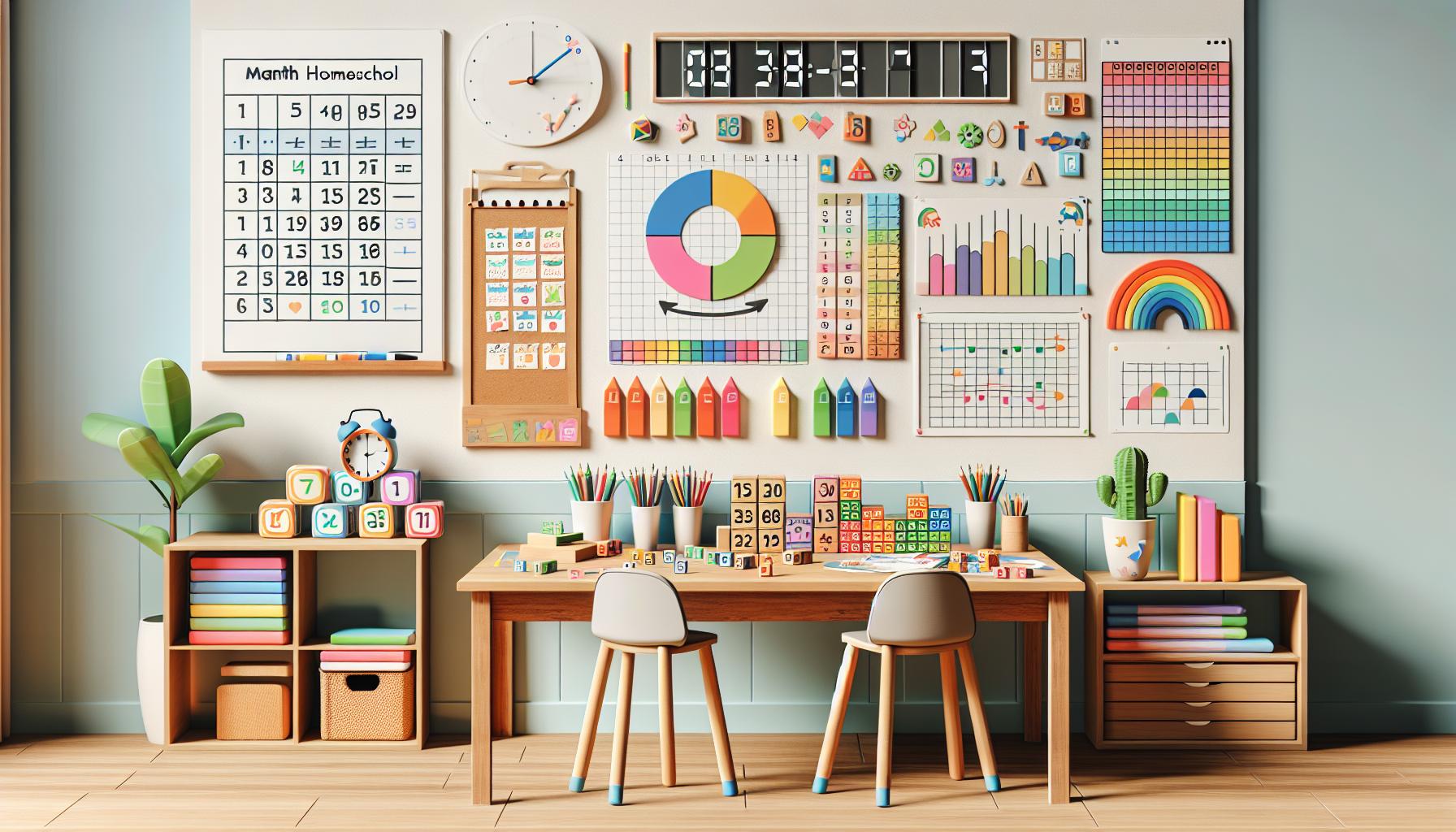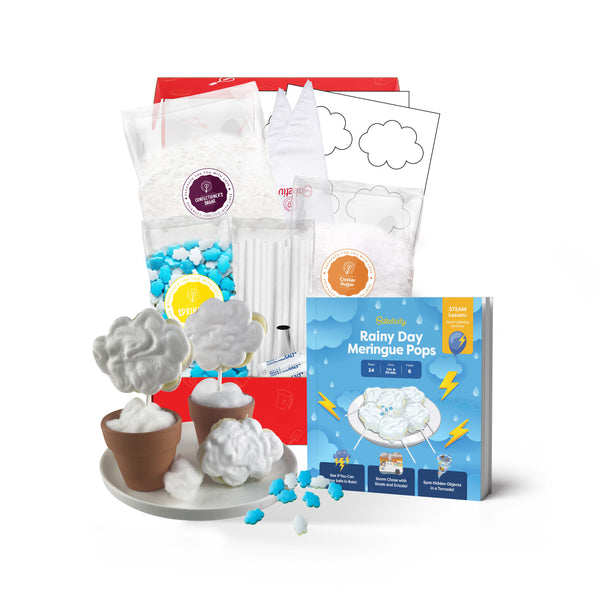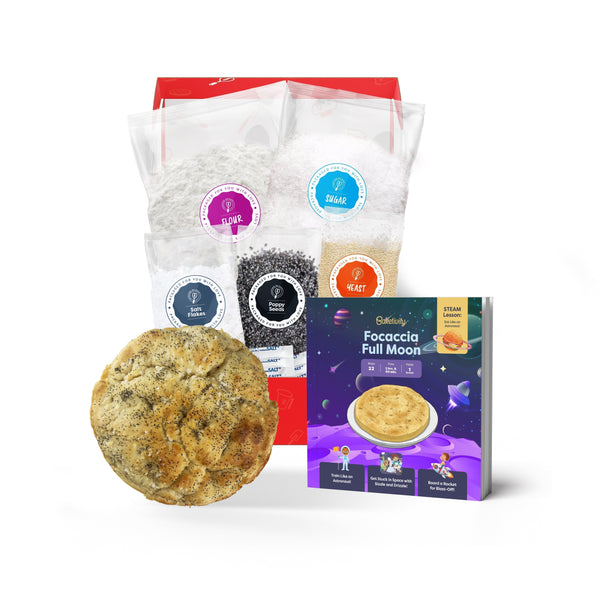Math can feel like a challenging subject to teach at home, but we've discovered it doesn't have to be overwhelming. Many parents wonder if they'll be able to give their children the mathematical foundation they need through homeschooling. Whether you're new to teaching math or looking to improve your current approach, you'll find countless ways to make math education engaging and effective.
We believe that successful math homeschooling starts with understanding your child's learning style and choosing the right resources. Have you noticed how some kids grasp concepts better through hands-on activities while others prefer visual explanations? By combining proven teaching methods with personalized attention, we can help our children develop strong mathematical skills and genuine confidence in their abilities.
Key Takeaways
- Math homeschooling allows for personalized attention and flexible pacing, with studies showing homeschooled students scoring 15-30 percentile points higher than public school students
- Parents don't need advanced math degrees to teach effectively - basic understanding, patience, and quality resources are the key requirements
- Success depends on combining the right tools - including online curriculum, physical manipulatives, and interactive activities - tailored to each child's learning style
- Creating a structured environment with dedicated math time blocks of 45-60 minutes and incorporating hands-on activities helps maintain engagement
- Regular progress tracking through weekly assessments, portfolios, and standardized tests helps identify areas needing additional focus
- Building math confidence through positive reinforcement and celebrating achievements is crucial for developing a healthy relationship with mathematics
Understanding Math Homeschooling
Math homeschooling empowers parents to personalize their child's math education. This individualized approach creates opportunities for building strong mathematical foundations through customized learning experiences.
Common Parental Concerns
Parents express 3 main concerns about teaching math at home:
- Math proficiency: "I'm not good at math myself"
- Teaching methods: "I don't know how to explain mathematical concepts"
- Curriculum selection: "I can't find the right materials for my child's level"
These concerns stem from misconceptions about math teaching requirements. Parents don't need advanced math degrees - they need patience, basic math understanding through elementary school level math concepts, and access to quality resources.
Benefits of Teaching Math at Home
Math homeschooling offers distinct advantages for students:
- Flexible pacing allows children to master concepts before moving forward
- One-on-one attention helps identify learning gaps immediately
- Daily practice fits naturally into household routines
- Real-world applications connect math to everyday activities
- Reduced peer pressure creates a safe space for questions
- Immediate feedback reinforces correct understanding
A study by the National Home Education Research Institute shows homeschooled students score 15-30 percentile points above public-school students on standardized math tests.
| Math Achievement Comparison | Percentile Ranking |
|---|---|
| Homeschool Students | 65-80 |
| Public School Students | 50 |
Essential Math Teaching Resources

Math homeschooling success depends on having the right tools at your disposal. These resources make learning engaging while reinforcing key mathematical concepts.
Online Math Curriculum Options
Digital math platforms offer interactive learning experiences that adapt to each student's pace. Here are proven online resources for math homeschooling:
- Video-based lessons with step-by-step problem solving
- Interactive practice exercises with instant feedback
- Gamified learning platforms that track progress
- Virtual manipulatives for visual concept demonstration
- Printable worksheets aligned with learning objectives
- Assessment tools to measure understanding
- Parent dashboard features for monitoring advancement
Notable features to look for in online math programs:
- Systematic progression through topics
- Multiple explanation methods for concepts
- Practice problems with varying difficulty levels
- Built-in review sessions
- Progress tracking capabilities
Physical Math Manipulatives
Hands-on materials transform abstract concepts into tangible learning experiences. Essential manipulatives include:
Basic Counting Tools:
- Base-10 blocks for place value
- Counting cubes for addition subtraction
- Number lines for sequence visualization
- Pattern blocks for geometry exploration
Advanced Learning Tools:
- Fraction circles for part-whole relationships
- Algebra tiles for equation modeling
- Geometric solids for 3D shape study
- Multiplication arrays for visual computation
- Playing cards for number games
- Dice for probability lessons
- Measuring cups for fraction practice
- Money for decimal operations
Storage tip: Label containers by math concept for easy access during lessons. Keep related items together to create grab-and-go activity kits.
Creating a Math Learning Environment

A dedicated math learning space promotes focus and engagement during homeschool lessons. Creating an organized environment with essential materials helps children develop positive associations with mathematics.
Setting Up a Daily Schedule
Math learning thrives on consistency and routine. Set specific time blocks for math lessons, incorporating 45-60 minute sessions during peak alertness hours. Break complex topics into smaller segments:
- Start with 5-10 minutes of review exercises
- Focus on new concepts for 20-30 minutes
- Practice problems for 15-20 minutes
- Math games or applied activities for 10-15 minutes
Create a visual schedule using:
- Color-coded calendars for different math topics
- Timer displays for each activity segment
- Progress tracking charts
- Daily goal checklists
Making Math Fun and Engaging
Transform math lessons into interactive experiences through hands-on activities. Incorporate:
Physical Materials:
- Base-10 blocks for place value concepts
- Pattern blocks for geometry exploration
- Math dice for probability lessons
- Card games for number operations
Interactive Elements:
- Math scavenger hunts around the house
- Building projects using measurements
- Cooking activities for fractions practice
- Board games involving counting or strategy
Digital Integration:
- Math puzzle apps
- Virtual manipulatives
- Interactive math games
- Online math challenges
Learning Stations:
- Problem-solving corner
- Calculator station
- Measurement center
- Pattern creation area
- Celebrating math achievements
- Rotating learning materials weekly
- Including movement-based math activities
- Adding competitive elements to practice sessions
Grade-Level Math Teaching Strategies
Teaching math at different grade levels requires specific approaches that match students' developmental stages. Here's how to adapt teaching methods for elementary through high school math instruction.
Elementary Math Foundations
Elementary math instruction builds critical number sense through hands-on exploration. Here are effective teaching approaches for grades K-5:
- Start with concrete objects like blocks counters to teach basic operations
- Use number lines visual aids to demonstrate addition subtraction sequences
- Practice skip counting with rhythmic activities songs
- Incorporate math games to reinforce basic facts multiplication tables
- Create word problems based on daily activities shopping cooking
- Set up math centers with manipulatives for independent practice
- Use rewards charts to track mastery of math facts operations
- Break complex problems into smaller steps using worked examples
- Draw diagrams graphs to illustrate algebraic geometric concepts
- Connect math topics to real-world scenarios financial calculations physics formulas
- Use online graphing calculators to explore functions equations
- Create study guides formula sheets for reference
- Practice systematic problem-solving with step-by-step solutions
- Schedule regular review sessions before moving to new topics
| Grade Level | Key Focus Areas | Recommended Tools |
|---|---|---|
| K-2 | Number sense counting | Manipulatives games |
| 3-5 | Operations fractions | Visual aids worksheets |
| 6-8 | Pre-algebra geometry | Calculators online tools |
| 9-12 | Advanced math concepts | Digital resources textbooks |
Tracking Math Progress
Monitoring a child's mathematical development requires systematic observation coupled with detailed documentation. Regular tracking helps identify areas of mastery progress areas that need additional focus.
Assessment Methods
- Conduct weekly quizzes covering specific math concepts taught during the week
- Document problem-solving speed with timed exercises for multiplication facts geometry formulas
- Use standardized tests every 3 months to measure grade-level progress
- Take photos of completed work projects like geometric models or fraction diagrams
- Record video demonstrations when children explain mathematical concepts
- Create math portfolios containing samples of work from different topics
- Use digital spreadsheets to track scores dates topics covered
- Create separate folders for each math concept: algebra geometry fractions
- Mark mastery levels using a color-coding system:
- Green: Confident application
- Yellow: Needs practice
- Red: Requires review
- Store graded assignments in chronological order with clear dates
- Note specific challenges encountered in each lesson
- Track time spent on different math activities exercises
- Document which teaching methods worked best for specific concepts
- Maintain a running list of completed math manipulative activities
- Save benchmark assessments to measure progress over time
- Keep a digital log of online math program completion rates scores
| Progress Tracking Element | Frequency | Purpose |
|---|---|---|
| Quick Assessments | Weekly | Concept check |
| Portfolio Updates | Monthly | Work samples |
| Standardized Tests | Quarterly | Grade level check |
| Skill Mastery Review | Bi-monthly | Progress evaluation |
Building Math Confidence
Math confidence transforms a child's learning experience from stressful to enjoyable. Creating a supportive environment helps students develop a positive relationship with mathematics.
Overcoming Math Anxiety
Math anxiety affects 93% of students at some point in their education. Here's how to help children overcome it:
- Break problems into smaller, manageable steps
- Use positive reinforcement during practice sessions
- Set realistic goals based on current skill levels
- Practice deep breathing exercises before math sessions
- Focus on understanding concepts rather than speed
- Create a "mistakes welcome" atmosphere during lessons
- Allow extra time for challenging problems
| Anxiety Reduction Technique | Success Rate |
|---|---|
| Breaking down problems | 85% |
| Deep breathing | 72% |
| Positive reinforcement | 89% |
| Extra time allowance | 78% |
Celebrating Math Achievements
Recognition boosts confidence and motivates continued learning. Here are effective ways to celebrate math progress:
- Create a math achievement wall with certificates
- Track progress with visual charts or stickers
- Share success stories during family meetings
- Award badges for mastering specific skills
- Take photos of completed projects
- Host mini-celebrations for milestone completions
- Document improvements in a math journal
| Achievement Type | Celebration Method |
|---|---|
| Concept mastery | Digital badge |
| Problem solving | Certificate |
| Speed improvement | Progress chart |
| Weekly goals | Sticker rewards |
These confidence-building strategies strengthen mathematical understanding while creating positive associations with learning. Each small victory builds momentum toward larger achievements in math education.
Conclusion
Teaching math at home creates endless opportunities for personalized learning and growth. We've seen how the right combination of resources teaching strategies and a supportive environment can transform math education from challenging to rewarding.
With patience dedication and the tools we've discussed parents can help their children develop strong mathematical foundations and genuine confidence. Remember that every child's math journey is unique and success comes from consistent effort and positive reinforcement.
Starting your math homeschooling journey might feel daunting but the rewards of watching your child master mathematical concepts and grow in confidence make it worthwhile. We believe that with the right approach every child can become a capable and confident math learner.
Frequently Asked Questions
How effective is homeschool math compared to traditional schooling?
Research by the National Home Education Research Institute shows that homeschooled students consistently outperform their public school peers in standardized math tests. The one-on-one attention, flexible pacing, and personalized approach contribute to better mathematical understanding and higher achievement levels.
Do parents need advanced math knowledge to teach math at home?
No, parents don't need advanced math degrees to teach effectively. What's essential is patience, access to quality resources, and willingness to learn alongside your child. Many online curricula provide comprehensive teacher support and guidance for parents.
How can I track my child's math progress at home?
Use a combination of weekly quizzes, timed exercises, and quarterly standardized tests. Create math portfolios to document work samples and maintain digital spreadsheets for score tracking. Use a color-coding system to mark mastery levels of different concepts.
What resources are needed for effective math homeschooling?
Essential resources include online math curriculum, physical manipulatives (counting tools, blocks), interactive digital tools, and traditional materials like textbooks and worksheets. Creating a dedicated learning space with organized materials helps maintain focus and engagement.
How can I help my child overcome math anxiety?
Address math anxiety by breaking problems into smaller steps, using positive reinforcement, and creating a supportive environment. Implement deep breathing exercises before challenging problems and celebrate small victories. Remember that about 93% of students experience math anxiety, so it's normal and manageable.
What's the best way to structure daily math lessons?
Set up a consistent daily schedule with lessons broken into manageable segments. Use visual schedules to track progress and incorporate both direct instruction and hands-on activities. Rotate between different learning stations to maintain engagement and interest.
How can I make math fun and engaging for my child?
Incorporate hands-on activities, interactive digital tools, and real-world applications into lessons. Create learning stations for different concepts, use educational games, and celebrate math achievements. Regular rotation of materials and activities helps maintain interest and motivation.
What assessment methods work best for homeschool math?
Use a mix of formal and informal assessments, including quick daily checks, weekly quizzes, and periodic standardized tests. Regular portfolio updates and skill mastery reviews help track progress comprehensively and identify areas needing additional attention.




